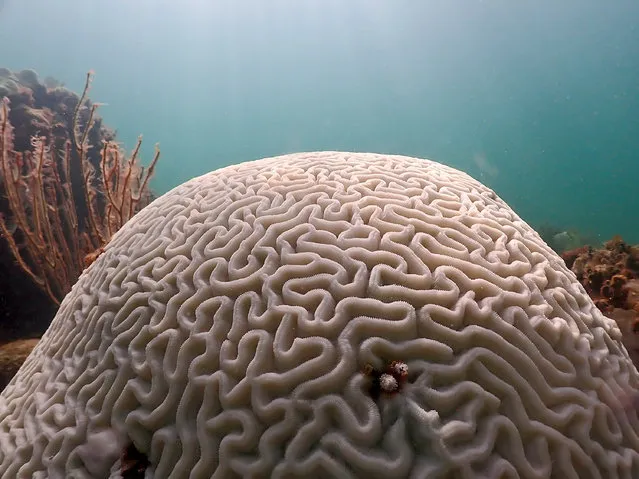
In this image provide by NOAA, the sun shines on coral showing sign of bleaching at Cheeca Rocks off the coast of Islamorada, Fla., on July 23, 2023. Scientists have seen devastating effects from prolonged hot water surrounding Florida – coral bleaching and some death. (Photo by Andrew Ibarra/NOAA via AP Photo)
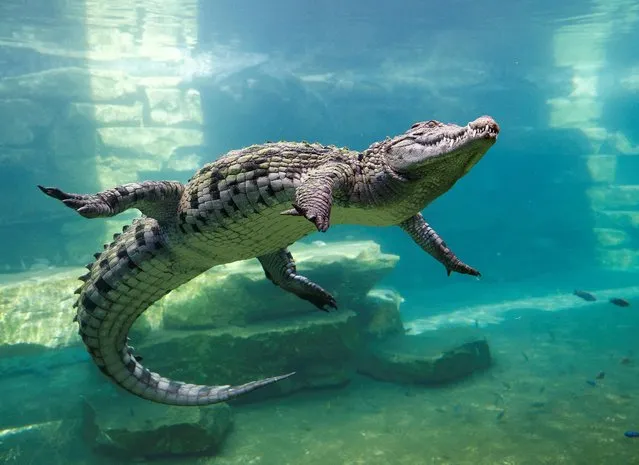
A crocodile dives behind the glass of an aquarium at the Dubai Crocodile Park in Dubai, United Arab Emirates on May 25, 2023. Dubai Crocodile park, a 20,000 sq meters indoor and outdoor facility, home to 250 Nile crocodiles from South Africa and Tunisia, introducing visitors to the world of crocs. (Photo by Rula Rouhana/Reuters)
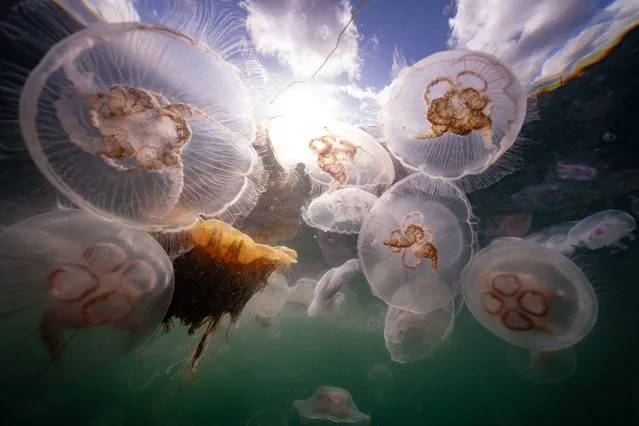
This picture taken on September 11, 2023 shows Moon Jellyfish (with rings) and Sting Jellyfish (yellow-orange inside) among a smack of a several thousand swimming off Seglvik, in northern Norway. (Photo by Olivier Morin/AFP Photo)
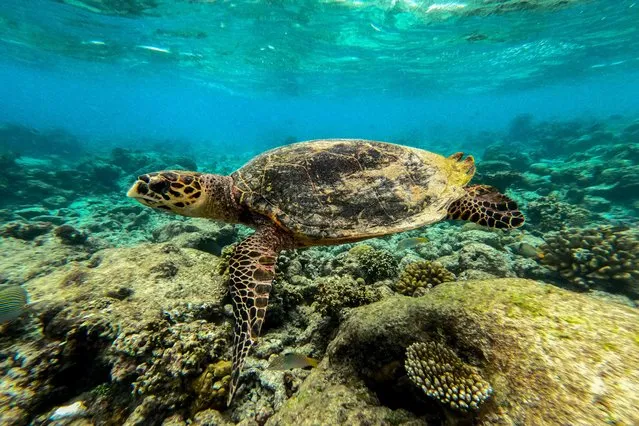
This underwater photograph taken on September 24, 2023 shows a sea turtle swimming among dead corals of a reef in Baa Atoll in Maldives. (Photo by Mladen Antonov/AFP Photo)
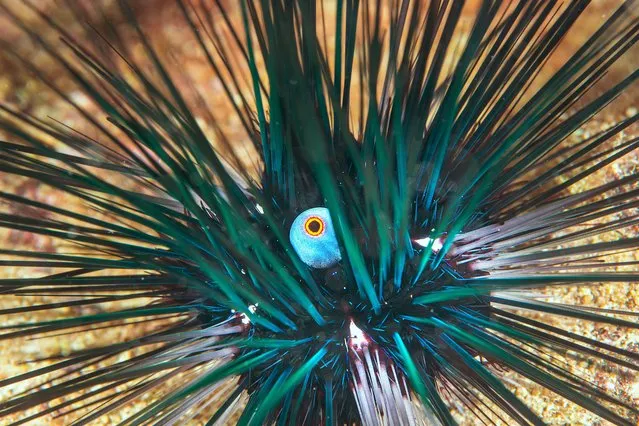
A view of a sea urchin observed with an underwater camera at the Gulf of Izmit and Gokova in Kocaeli, Turkiye on September 5, 2023. Sea urchins, are determinant species of the marine ecosystem, with about thousand species in the world's seas. The main food source of sea urchins is algae. These determinant species cannot live in poor water conditions as they are known for being food for many creatures in marine life. (Photo by Tahsin Ceylan/Anadolu Agency via Getty Images)
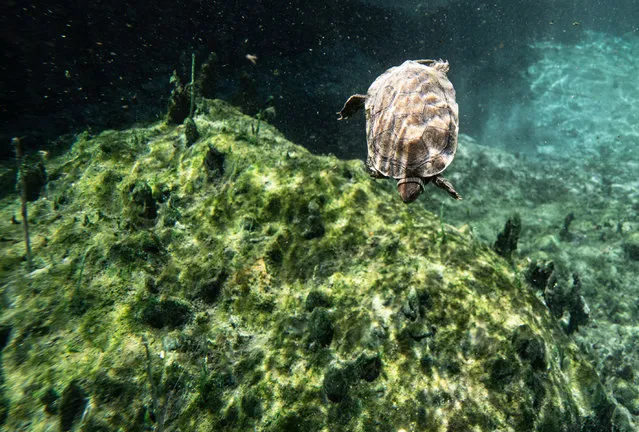
A turtle swims in mineral water by the cave as tourists visit Kaklik Cave located in Denizli, Turkiye on July 01, 2023. (Photo by Mahmut Serdar Alakus/Anadolu Agency via Getty Images)
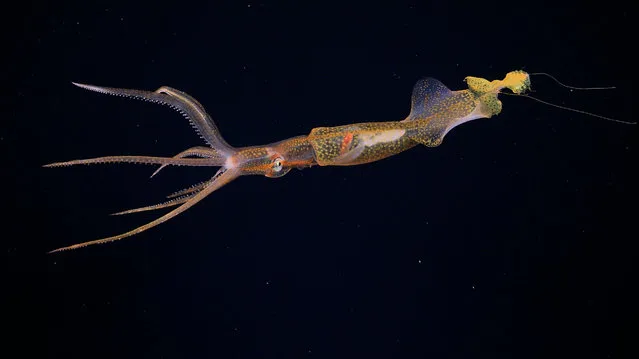
Handout picture released by the Scmidt Ocean Institue on September 14, 2023, showing a Grimalditeuthis near the Navidad Vent Field in Ecuador's Galapagos archipelago. These squid were only observed alive in the wild for the first time in 2005. It has rarely been encountered, but is believed exist worldwide, living at depths of 200–1500 m below sea level. (Photo by Handout/Schmidt Ocean Institute via AFP Photo)
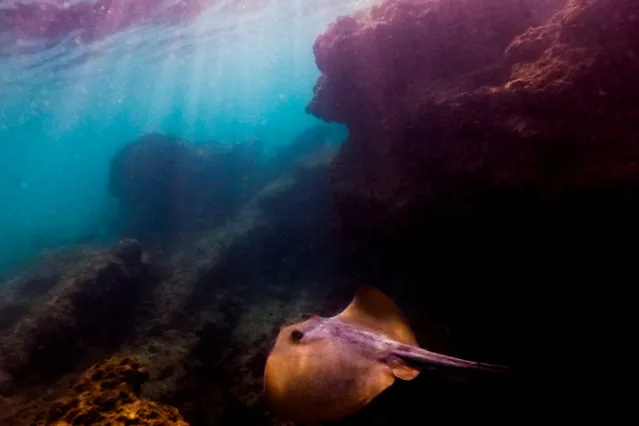
A stingray swims in the Mediterranean Sea in Gador sea and nature reserve in Hadera, northern Israel, Wednesday, May 24, 2023. (Photo by Ariel Schalit/AP Photo)
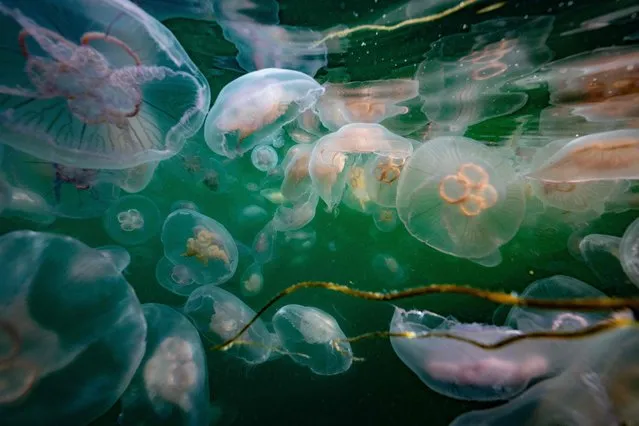
This picture taken on September 11, 2023 shows Moon Jellyfish (with rings) and Sting Jellyfish (yellow-orange inside) among a smack of a several thousand swimming off Seglvik, in northern Norway. (Photo by Olivier Morin/AFP Photo)

A view of the mother “Common octopus” (Octopus vulgaris) during the incubation period in a 12-meter-deep hole in the sea in Karaburun district of Izmir, Turkiye on June 23, 2023. The “common octopus” is found in a wide geography from the Mediterranean Sea to the southern coasts of England, from the Western Atlantic to the Eastern Atlantic coasts. During the incubation period, which lasts 40-55 days, mother octopuses mostly do not even go out to hunt and complete this period without any food. After the hatching of the young, the octopus completes its maternal duty. The mothers usually die after seeing their offspring due to lack of food. (Photo by Mahmut Serdar Alakus/Anadolu Agency via Getty Images)
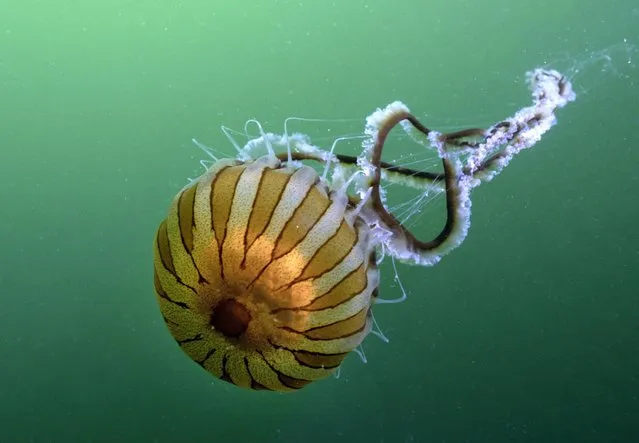
A view of compass jellyfish recorded by underwater imaging director and documentary filmmaker, Tahsin Ceylan during his dive in Golcuk district of Kocaeli, Turkiye on June 04, 2023. Ceylan stated that one of the compass jellyfish he recorded was 30-35 and the other was around 20 centimeters. (Photo by Tahsin Ceylan/Anadolu Agency via Getty Images)
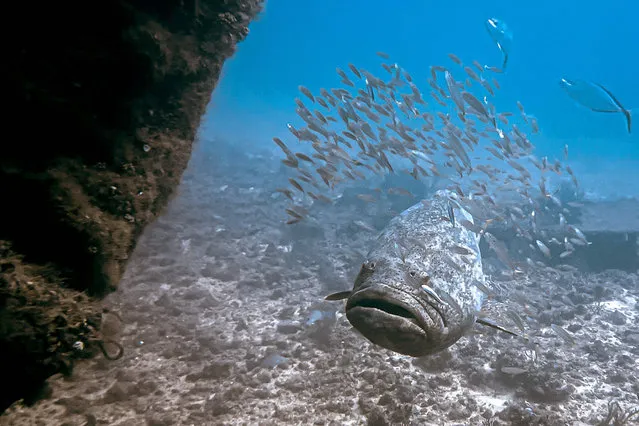
Atlantic goliath grouper fish swim near Boynton Beach, Florida on September 10, 2023. The goliath grouper, a gigantic fish weighing up to 360 kg (793 lbs), is a delight for divers in Florida, but scientists are warning of a declining population in recent years, even though the authorities recently reauthorized its fishing “Nowhere else is it possible to have a (diving) experience with a fish this big, and this close”, Dr. James Locascio of the Mote Marine Laboratory told AFP. (Photo by Jesus Olarte/AFP Photo)
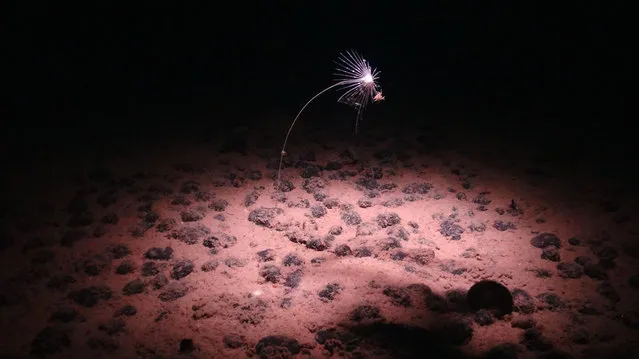
A handout image made available by the National Oceanography Centre on July 24, 2023, shows a carnivorous sponge, Axoniderma mexicana, photographed during a recent expedition to the NE Pacific abys and found in the Clarion-Clipperton Zone (CCZ), has shown it is not just rich with life – with one study finding some 5,000 species previously unknown to science – but also far more complex than previously thought. That raises further questions about controversial proposals, currently being discussed at international talks in Jamaica, to mine the CCZ for the rock-like nodules. Once thought of as an underwater desert, the vast abyssal plain stretching between Hawaii and Mexico has been scoured by scientists as mining firms eye mineral-rich nodules scattered across the seafloor. From giant sea cucumbers and a shrimp with a set of elongated bristly legs, to the many tiny worms, crustaceans and molluscs, the lightless ocean depths are far from barren. (Photo by National Oceanography Centre/AFP Photo)
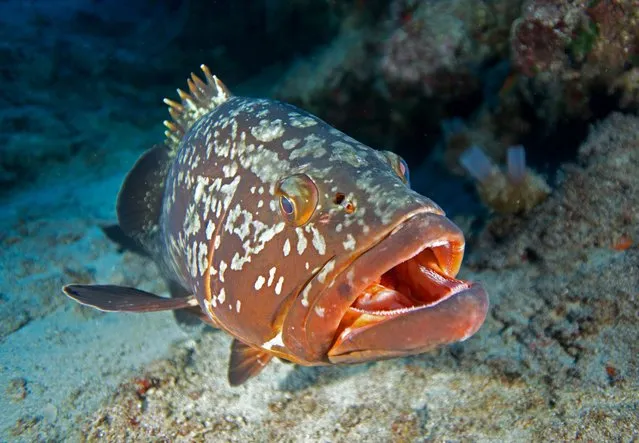
A view of a grouper, an endangered species that lives off the coasts of the Mediterranean and Atlantic Ocean, documented by underwater documentary filmmaker and cinematographer Tahsin Ceylan and his diving team for the August 30 Victory Day of Turkish Republic in Antalya, Turkiye on August 29, 2023. (Photo by Tahsin Ceylan/Anadolu Agency via Getty Images)
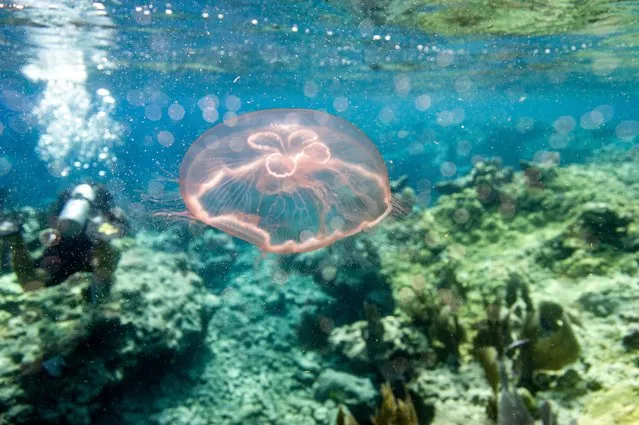
A Moon jellyfish (Aurelia aurita) swims around a coral reef in Key West, Florida on July 13, 2023. The coral reef, the largest in the continental US, is considered a barrier reef and is around 350 miles (563.27 km) wide from the Dry Tortugas National Park to the St. Lucie Inlet in Martin County, Florida. (Photo by Joseph Prezioso/AFP Photo)
07 Mar 2024 06:09:00,
post received
0 comments
